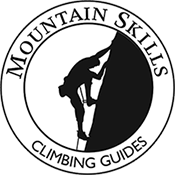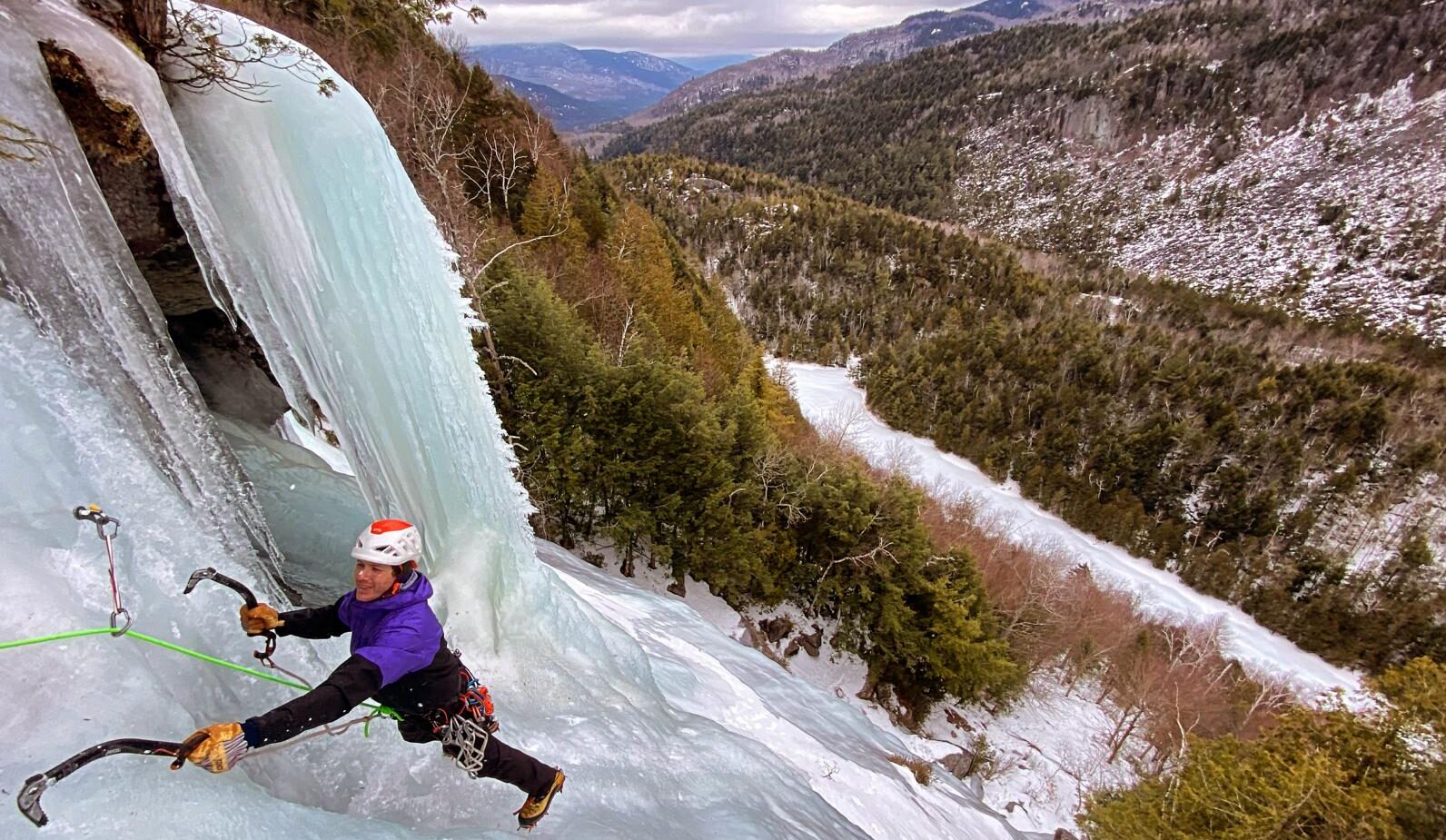What to Expect
You will meet your guide at the Mountain Skills Office ( 5 Paradies Lane, New Paltz, NY 12561). Once at the office, we’ll get you outfitted with your technical climbing equip
Winter Gear List
We supply all the technical ice climbing equipment necessary for a successful day of climbing (boots, crampons, helmets, vertical ice axes, etc.). However, you are responsible for all clothing.
Bringing the correct equipment and wearing the correct clothing can truly make or break your day in the mountains. We can’t stress enough the importance of being prepared for ice climbing.
Basic Equipment
- Alpine day backpack, 2,500 to 3,500 cu. in., for carrying all your gear.
- Two liters of water or a warm drink in a thermos.
- Lunch with additional snacks (i.e., GORP, Gu Gels, dehydrated fruit, cheese, meat stick)
- Camera phone, sunglasses, hand-warmers, and a headlamp.
- Micro Spikes
- Trekking Poles or single-pole
Recommended Winter Layering System
Layering is key to regulating your body temperature as you go through the day’s cycles of physical exertion when hiking in, climbing, belaying, lunching, and resting. Your comfort is important to us. We suggest:
- First layer of underwear: lightweight wicking layer, e.g., silk-weight Capilene
- Second layer of underwear: a heavier, insulating layer, like microfleece or mid-weight fleece.
- Over your underwear: a heavy insulating layer, e.g., heavyweight fleece.
- Jacket: a down or synthetic down jacket is handy to keep warm while belaying.
- Outermost shell: a coat and pants that are Gortex or a similar waterproof, breathable material. Recently designed soft shells work well for this.
- Socks: Synthetic or wool socks or synthetic sock liners under heavyweight wool socks.
- Gloves: Two pairs of gloves with good dexterity. Gloves for ice climbing should have good dexterity so that you can handle carabiners, belay devices, and rope with ease. Gloves get wet during the day, so bringing an extra pair is highly recommended.
- Additional layers: Fleece/wool hat. Neck gaiters or a balaclava work well in extremely cold conditions. And boot gaiters are useful for protecting your pants from your crampons and for keeping snow out of your boots.

